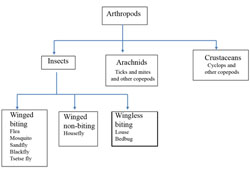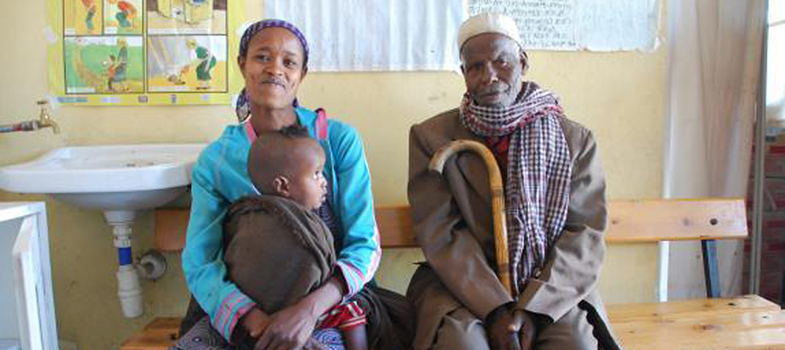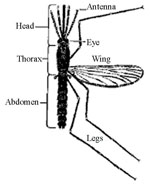6.4 Classification of vectors and their life cycles
6.4.1 Arthropods
The large group of animals called arthropods includes three main types of organism that are important for the transmission of diseases: insects, arachnids and crustaceans (see Figure 6.1). This section will focus on insects, because they cause major public health problems.

Morphology/structure of insects
The insect body is divided into head, thorax and abdomen. The mosquito, a typical example, is shown in Figure 6.2. The head has a pair of eyes, antennae, and mouth equipped with sucking or biting parts. The thorax has three joined segments, three pairs of legs, and one or two pairs of wings, although some insects are wingless.
Reproduction/life cycle of insects
Most insects follow one of two main modes of reproduction. Winged insects, such as the housefly, undergo four stages of development: egg, larva, pupa and adult. There may be several larval stages. Wingless insects, such as lice, undergo three stages: egg, larva and adult.
6.3 Vector-borne disease transmission mechanisms

